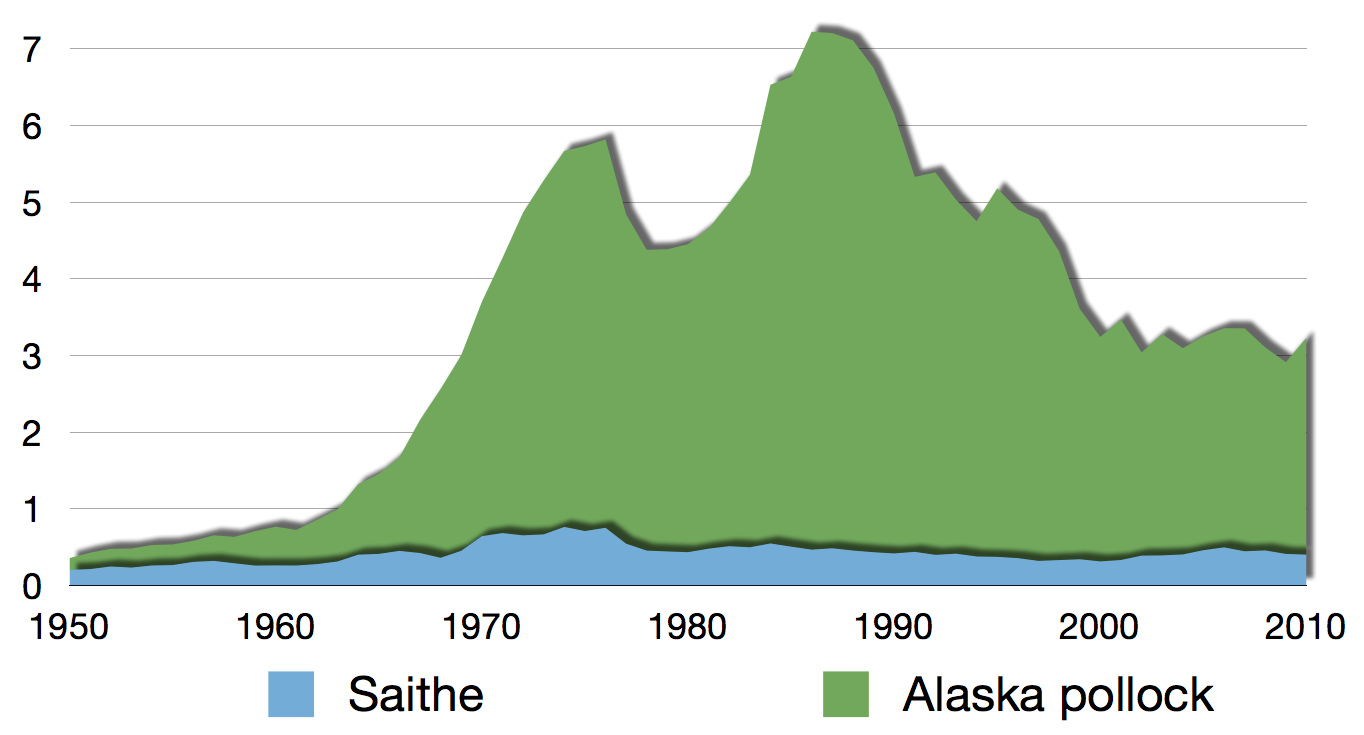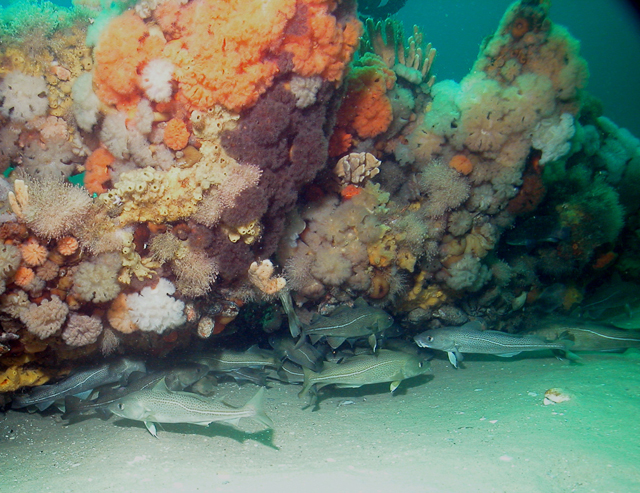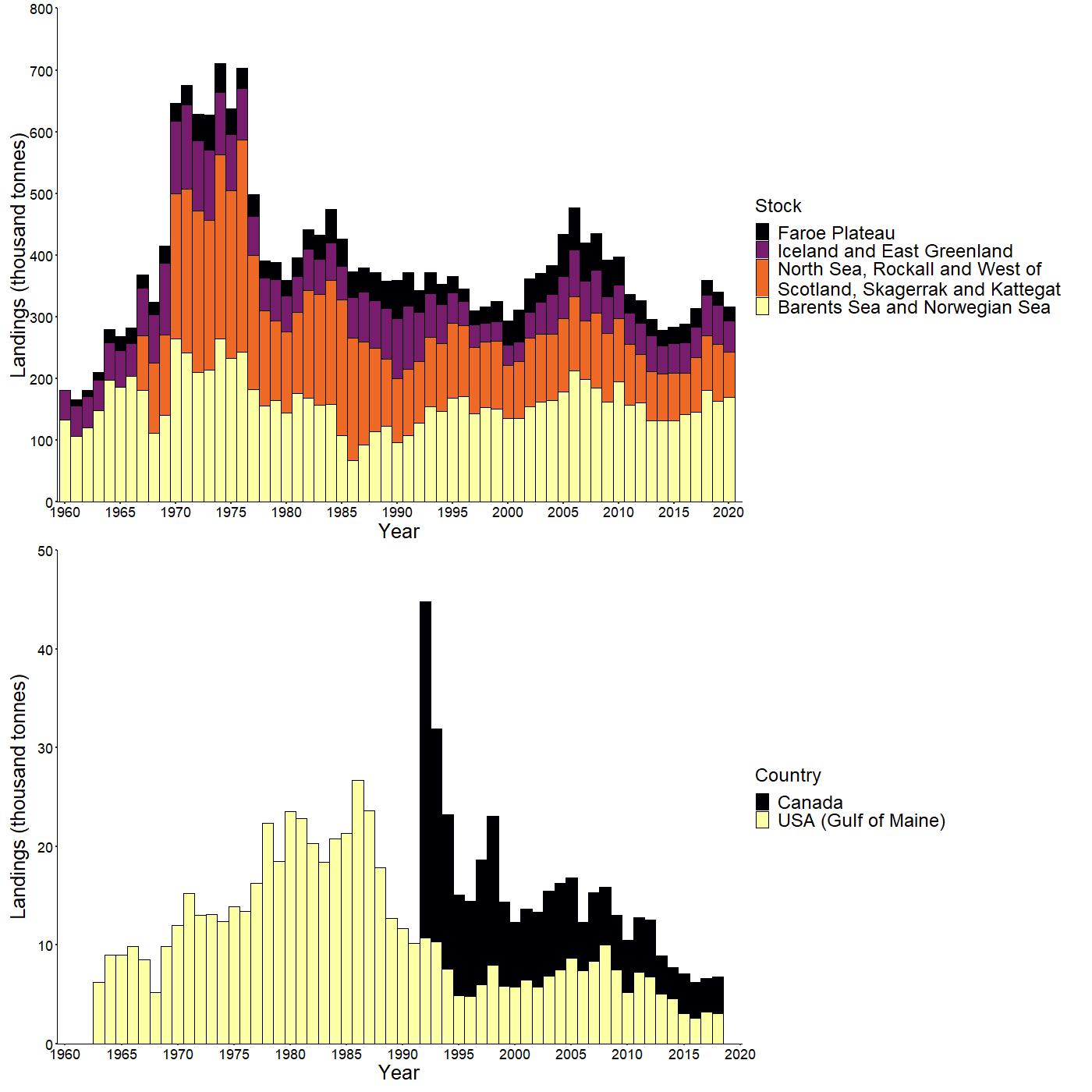|
Maërl
Maerl (also rhodolith) is a collective name for non-geniculate coralline red algae with a certain growth habit. Maerl grows at a rate of c. 1 mm per year. It accumulates as unattached particles and forms extensive beds in suitable sublittoral sites.Vize, S.; Blake, C.; Hinojosa, G. and Maggs, C.A. 2003. The distribution and composition of maerl beds in Northern Ireland. ''PMNHS Newsletter'' No.13 p.26 The term maerl originally refers to the branched growth form of Lemoine (1910) and ''rhodolith'' is a sedimentological or genetic term for both the nodular and branched growth forms (Basso et al., 2015). Description In Europe maerl beds occur throughout the Mediterranean, along most of the Atlantic coast from Portugal to Norway, and in the English Channel, Irish Sea and North Sea. The distribution of maerl is dependent on water movement, light and salinity concentration.Wilson, S., Blake, C., Berges, J.A., and Maggs, C.A. (2004) "Environmental tolerances of free-living coral ... [...More Info...] [...Related Items...] OR: [Wikipedia] [Google] [Baidu] |
Coralline Algae
Coralline algae are red algae in the order Corallinales. They are characterized by a thallus that is hard because of calcareous deposits contained within the cell walls. The colors of these algae are most typically pink, or some other shade of red, but some species can be purple, yellow, blue, white, or gray-green. Coralline algae play an important role in the ecology of coral reefs. Sea urchins, parrot fish, and limpets and chitons (both mollusks) feed on coralline algae. In the temperate Mediterranean Sea, coralline algae are the main builders of a typical algal reef, the ''Coralligène'' ("coralligenous"). Many are typically encrusting and rock-like, found in marine waters all over the world. Only one species lives in freshwater. Unattached specimens ( maerl, rhodoliths) may form relatively smooth compact balls to warty or fruticose thalli. A close look at almost any intertidal rocky shore or coral reef will reveal an abundance of pink to pinkish-grey patches, distributed throu ... [...More Info...] [...Related Items...] OR: [Wikipedia] [Google] [Baidu] |
Coralline Algae
Coralline algae are red algae in the order Corallinales. They are characterized by a thallus that is hard because of calcareous deposits contained within the cell walls. The colors of these algae are most typically pink, or some other shade of red, but some species can be purple, yellow, blue, white, or gray-green. Coralline algae play an important role in the ecology of coral reefs. Sea urchins, parrot fish, and limpets and chitons (both mollusks) feed on coralline algae. In the temperate Mediterranean Sea, coralline algae are the main builders of a typical algal reef, the ''Coralligène'' ("coralligenous"). Many are typically encrusting and rock-like, found in marine waters all over the world. Only one species lives in freshwater. Unattached specimens ( maerl, rhodoliths) may form relatively smooth compact balls to warty or fruticose thalli. A close look at almost any intertidal rocky shore or coral reef will reveal an abundance of pink to pinkish-grey patches, distributed throu ... [...More Info...] [...Related Items...] OR: [Wikipedia] [Google] [Baidu] |
Rhodolith
Rhodoliths (from Greek for ''red rocks'') are colorful, unattached calcareous nodules, composed of crustose, benthic marine red algae that resemble coral. Rhodolith beds create biogenic habitat for diverse benthic communities. The rhodolithic growth habit has been attained by a number of unrelated coralline red algae, organisms that deposit calcium carbonate within their cell walls to form hard structures or nodules that resemble beds of coral. Rhodoliths do not attach themselves to the rocky seabed. Rather, they roll like tumbleweeds along the seafloor until they become too large in size to be mobilised by the prevailing wave and current regime. They may then become incorporated into a semi-continuous algal mat or form an algal build-up. While corals are animals that are both autotrophic (photosynthesize via their symbionts) or heterotrophic (feeding on plankton), rhodoliths produce energy solely through photosynthesis (i.e. they can only grow and survive in the photic zone of ... [...More Info...] [...Related Items...] OR: [Wikipedia] [Google] [Baidu] |
Maërl
Maerl (also rhodolith) is a collective name for non-geniculate coralline red algae with a certain growth habit. Maerl grows at a rate of c. 1 mm per year. It accumulates as unattached particles and forms extensive beds in suitable sublittoral sites.Vize, S.; Blake, C.; Hinojosa, G. and Maggs, C.A. 2003. The distribution and composition of maerl beds in Northern Ireland. ''PMNHS Newsletter'' No.13 p.26 The term maerl originally refers to the branched growth form of Lemoine (1910) and ''rhodolith'' is a sedimentological or genetic term for both the nodular and branched growth forms (Basso et al., 2015). Description In Europe maerl beds occur throughout the Mediterranean, along most of the Atlantic coast from Portugal to Norway, and in the English Channel, Irish Sea and North Sea. The distribution of maerl is dependent on water movement, light and salinity concentration.Wilson, S., Blake, C., Berges, J.A., and Maggs, C.A. (2004) "Environmental tolerances of free-living coral ... [...More Info...] [...Related Items...] OR: [Wikipedia] [Google] [Baidu] |
Pollack (fish)
Pollock or pollack (pronounced ) is the common name used for either of the two species of North Atlantic marine fish in the genus ''Pollachius''. ''Pollachius pollachius'' is referred to as pollock in North America, Ireland and the United Kingdom, while ''Pollachius virens'' is usually known as saithe or coley in Great Britain and Ireland (derived from the older name coalfish). Other names for ''P. pollachius'' include the Atlantic pollock, European pollock, ''lieu jaune'', and lythe; while ''P. virens'' is also known as Boston blue (distinct from bluefish), silver bill, or saithe. Species The recognized species in this genus are: * ''Pollachius pollachius'' (Linnaeus, 1758) (pollack) * ''Pollachius virens'' (Linnaeus, 1758) (coalfish) Description Both species can grow to and can weigh up to . ''P. virens'' has a strongly defined, silvery lateral line running down the sides. Above the lateral line, the colour is a greenish black. The belly is white, while '' ... [...More Info...] [...Related Items...] OR: [Wikipedia] [Google] [Baidu] |
Taxa
In biology, a taxon (back-formation from ''taxonomy''; plural taxa) is a group of one or more populations of an organism or organisms seen by taxonomists to form a unit. Although neither is required, a taxon is usually known by a particular name and given a particular ranking, especially if and when it is accepted or becomes established. It is very common, however, for taxonomists to remain at odds over what belongs to a taxon and the criteria used for inclusion. If a taxon is given a formal scientific name, its use is then governed by one of the nomenclature codes specifying which scientific name is correct for a particular grouping. Initial attempts at classifying and ordering organisms (plants and animals) were set forth in Carl Linnaeus's system in ''Systema Naturae'', 10th edition (1758), as well as an unpublished work by Bernard and Antoine Laurent de Jussieu. The idea of a unit-based system of biological classification was first made widely available in 1805 in the int ... [...More Info...] [...Related Items...] OR: [Wikipedia] [Google] [Baidu] |
Gadus Morhua
The Atlantic cod (''Gadus morhua'') is a benthopelagic fish of the family Gadidae, widely consumed by humans. It is also commercially known as cod or codling.''Atlantic Cod'' . Seafood Portal. Dry cod may be prepared as unsalted stockfish,''Oxford English Dictionary'', 3rd ed. "milwell, ''n.''" Oxford University Press (Oxford), 2002.''Oxford English Dictionary'', 1st ed. "stock-fish , 'stockfish, ''n.''" Oxford University Press (Oxford), 1917. and as cured |
Saithe
The saithe ( or ) (''Pollachius virens'') is a species of marine fish in the Pollock genus ''Pollachius''. Together with '' P. pollachius'', it is generally referred to in the United States as pollock. Other names include the Boston blue (separate from bluefish), coalfish/coley, and saithe in the UK, where the young fish are called podleys in Scotland and northern England. Description This species can be separated from ''P. pollachius'' by looking at the relative lengths of the upper and lower jaws. ''P. pollachius'' has a longer underslung lower jaw while ''P. virens'' has approximately equal upper and lower jaw lengths. This gives a very different profile to the head. In general, ''P. pollachius'' is a brown or golden colour with a dark back while ''P. virens'' is bright silver with a very dark green back. ''P. virens'' generally appears to have relatively smaller eyes. The lateral line of ''P. pollachius'' has a noticeable kink over the pectoral fins while that of ''P. virens ... [...More Info...] [...Related Items...] OR: [Wikipedia] [Google] [Baidu] |
Pollachius Virens
The saithe ( or ) (''Pollachius virens'') is a species of marine fish in the Pollock genus ''Pollachius''. Together with '' P. pollachius'', it is generally referred to in the United States as pollock. Other names include the Boston blue (separate from bluefish), coalfish/coley, and saithe in the UK, where the young fish are called podleys in Scotland and northern England. Description This species can be separated from ''P. pollachius'' by looking at the relative lengths of the upper and lower jaws. ''P. pollachius'' has a longer underslung lower jaw while ''P. virens'' has approximately equal upper and lower jaw lengths. This gives a very different profile to the head. In general, ''P. pollachius'' is a brown or golden colour with a dark back while ''P. virens'' is bright silver with a very dark green back. ''P. virens'' generally appears to have relatively smaller eyes. The lateral line of ''P. pollachius'' has a noticeable kink over the pectoral fins while that of ''P. viren ... [...More Info...] [...Related Items...] OR: [Wikipedia] [Google] [Baidu] |
ARRAN SEASCENES 013
Arran may refer to: Places * Isle of Arran, Scotland * Aran Islands, County Galway, Ireland * Arranmore, County Donegal, Ireland, also known in English as Aran Island * Arran (Caucasus), or Caucasian Albania, a historical region * Arran, Saskatchewan, Canada * Arran, Syria, a village in Aleppo Governorate, Syria * Arran–Elderslie, Ontario, Canada People Given name * Prince Arran, semi-legendary founder of Caucasian Albania *Arran Brindle (born 1981), English female cricketer *Arran Brown (born 1985), South African cyclist *Arran Fernandez (born 1995), British mathematician *Arran Gare (born 1948), Australian philosopher *Arran Hoffmann (1902–1990), German sports shooter *Arran Lee-Barrett (born 1984), English footballer *Arran Pene (born 1967), New Zealand rugby player *Arran Steele (born 1975), English cricketer *Arran Stephens (born 1944), Canadian entrepreneur, author and philanthropist Surname *Len Arran (born 1961), English composer of film scores Other names *Earl of ... [...More Info...] [...Related Items...] OR: [Wikipedia] [Google] [Baidu] |
Pollachius Pollachius
''Pollachius pollachius'' (Atlantic or European pollock) is a species of marine fish in the ''Pollachius'' genus. FAO uses the English name pollack for this species. Together with ''Pollachius virens'', it may also be referred to as pollock. Other names include European pollock, ''lieu jaune'', lythe and in the Isle of Man, callig . It is common in the north-eastern parts of the Northern Atlantic, including the Bay of Biscay and North Sea. Adults can grow up to and weigh up to , although more commonly their maximum length is . Ecology and life history Pollack are fast-growing and relatively short-lived. The maximum reported age is 15 years. They are said to spawn offshore, although their spawning grounds are poorly known; a study of a fjord population in Norway suggested local spawning. Pollack are benthopelagic, that is, they live near the sea floor. They seem to be relatively sedentary. Fisheries Pollack is of value to fisheries, although it mainly represents bycatch. Landin ... [...More Info...] [...Related Items...] OR: [Wikipedia] [Google] [Baidu] |
Scallops
Scallop () is a common name that encompasses various species of marine bivalve mollusks in the taxonomic family Pectinidae, the scallops. However, the common name "scallop" is also sometimes applied to species in other closely related families within the superfamily Pectinoidea, which also includes the thorny oysters. Scallops are a cosmopolitan family of bivalves found in all of the world's oceans, although never in fresh water. They are one of the very few groups of bivalves to be primarily "free-living", with many species capable of rapidly swimming short distances and even migrating some distance across the ocean floor. A small minority of scallop species live cemented to rocky substrates as adults, while others attach themselves to stationary or rooted objects such as seagrass at some point in their lives by means of a filament they secrete called a byssal thread. The majority of species, however, live recumbent on sandy substrates, and when they sense the presence of ... [...More Info...] [...Related Items...] OR: [Wikipedia] [Google] [Baidu] |


.jpg)




